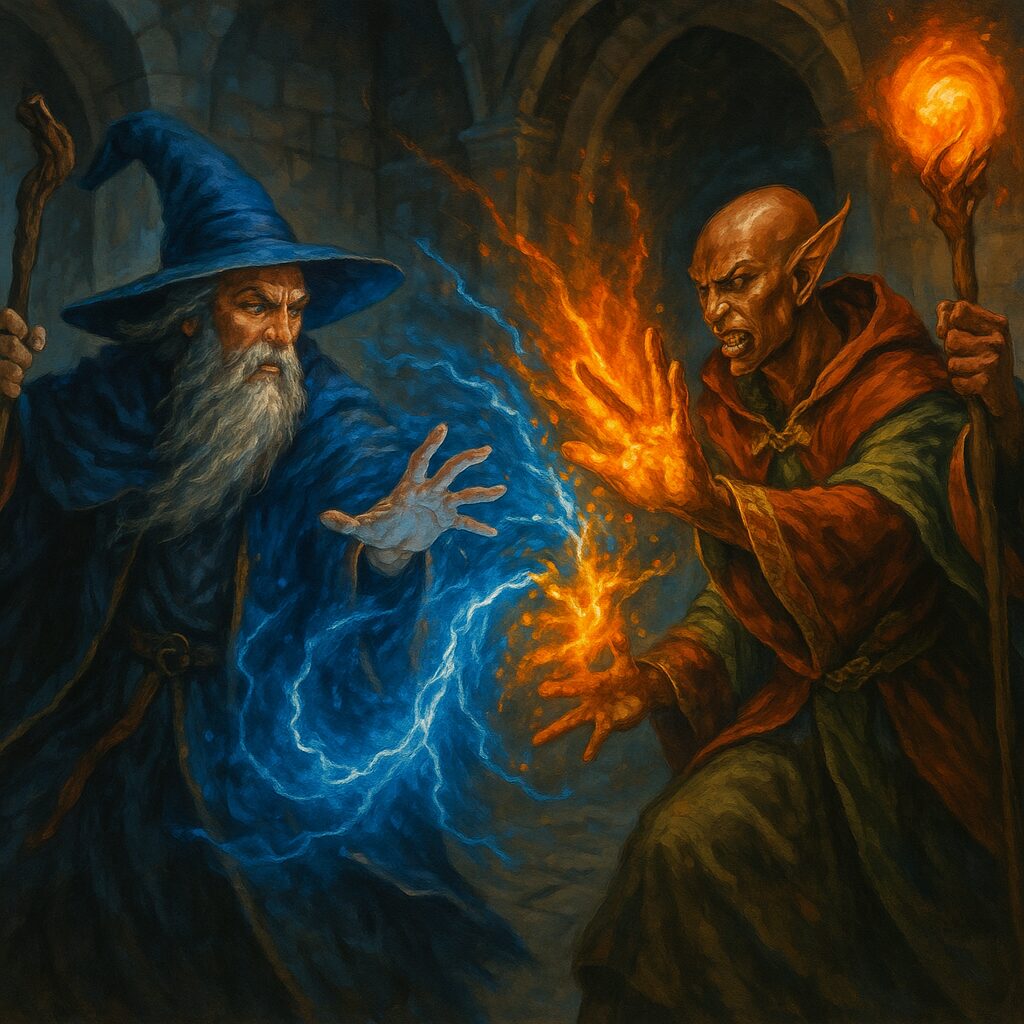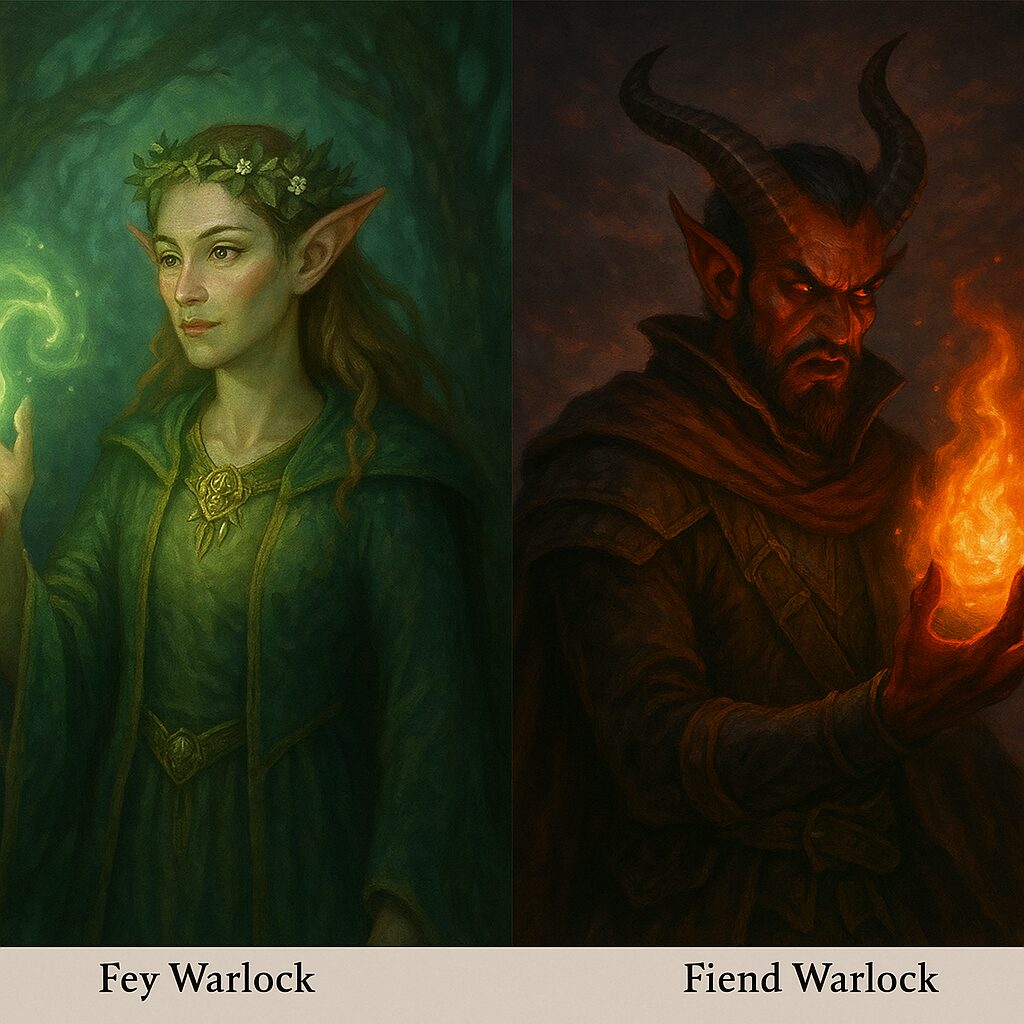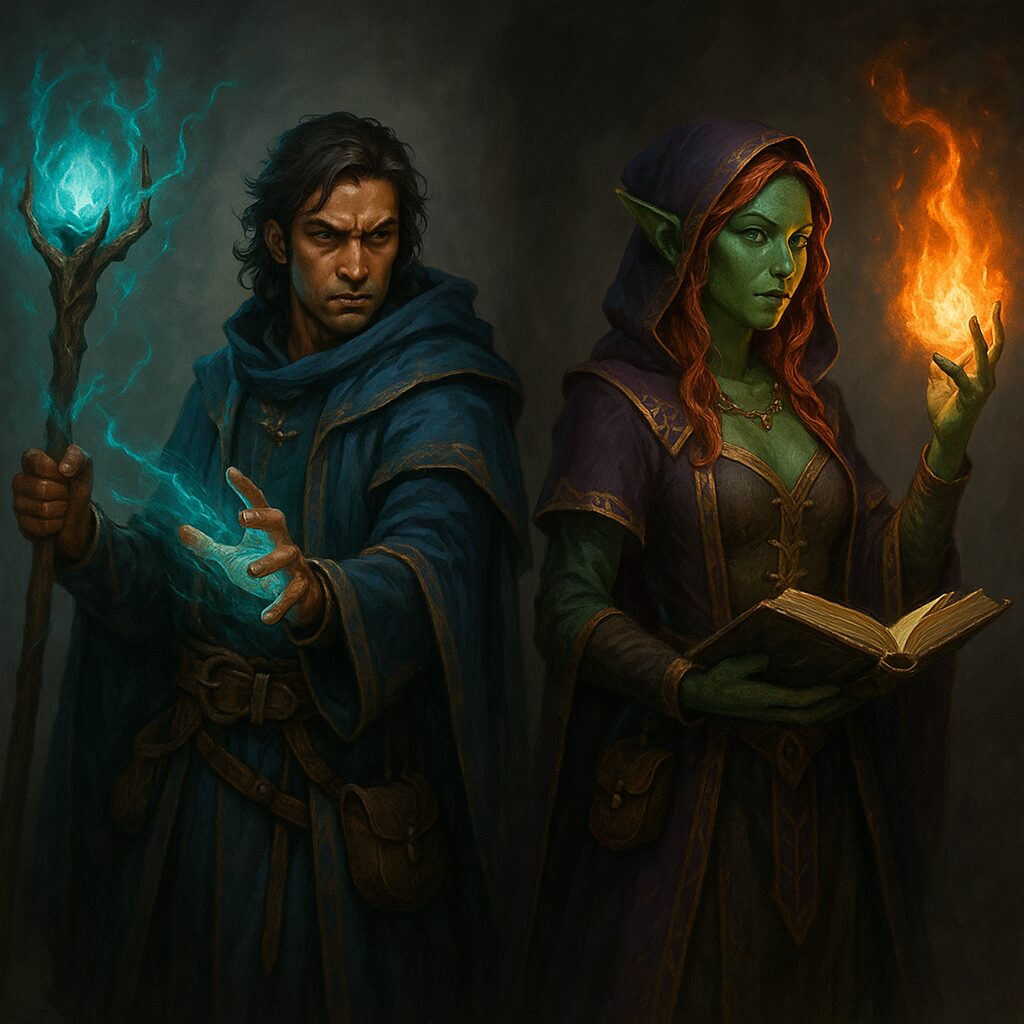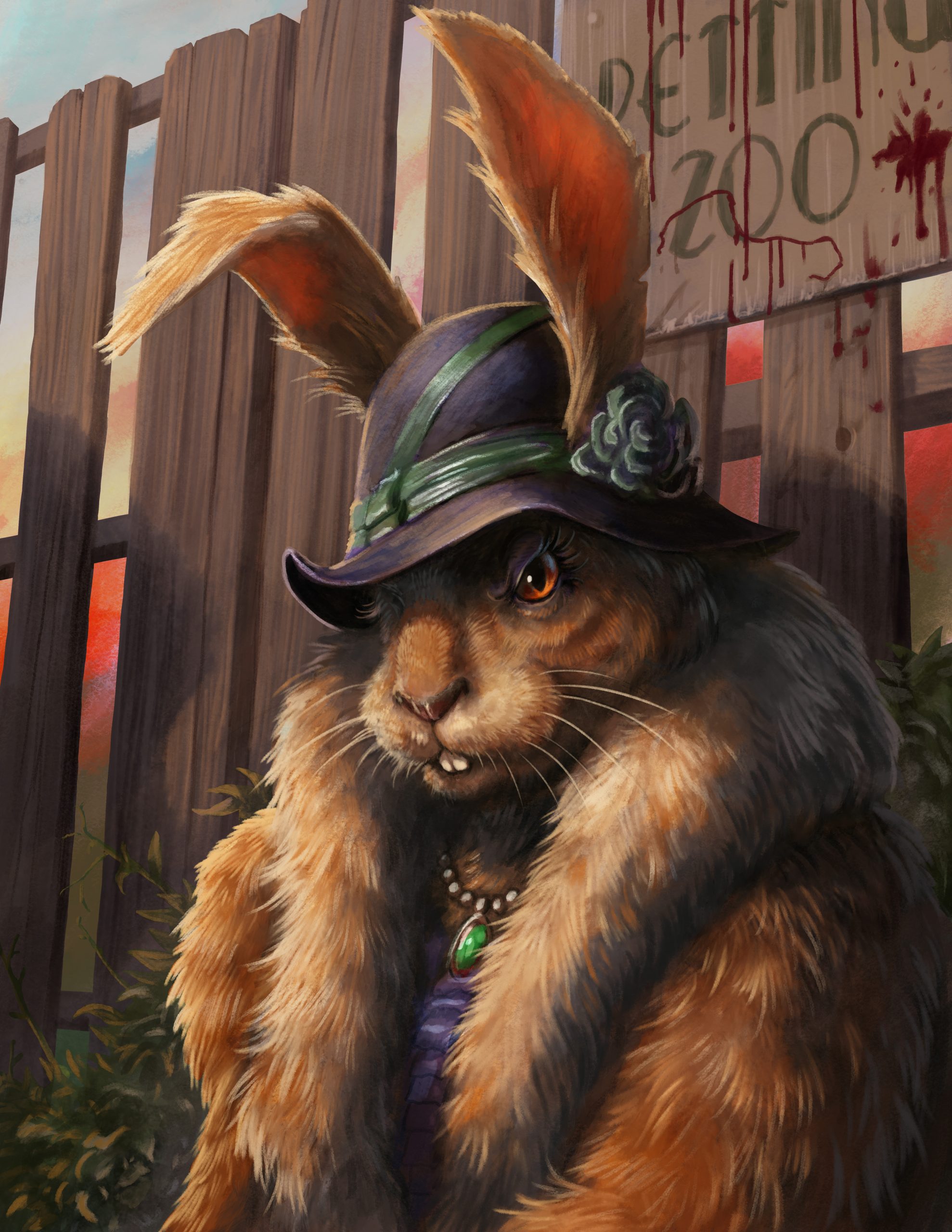
Shifting Flesh and Altered Forms: How to Transform Your D&D Character’s Body
From claws and wings to shadow-skin and monstrous might—build the form that matches the fantasy

When it comes to the magic power of words this merfolk knows what I’m talking about. [Art by Howard Lyon]
One of the coolest parts of Dungeons & Dragons isn’t just who your character is—it’s what they become. Whether you want to sprout wings, gain shadowy tendrils, or transform into something entirely inhuman, 5e gives you tons of options to morph, mutate, or evolve your body. This post is inspired by the Unearthed Arcana. The new Ranger subclass gets some cool powers when you cast Hunters Mark. But it got me thinking about transformation and all the fun things you can do with it.
So if you’re building a character who’s more than just skin-deep—a divine ascendant, a half-dragon warrior, a beast-bound mystic—this post is for you.
Let’s break down all the races, classes, subclasses, and spells that allow you to reshape your body, partially or completely, to lean fully into the physical vibe of your concept.
🧬 Races and Lineages: Start With the Body
Some transformations start at birth—or reincarnation.
1. Shifters (Eberron)
Can temporarily take on bestial features: elongated jaws, thickened claws, animal eyes, etc.
Perfect for: Werewolf themes, beast-kin, primal hybrids.
2. Simic Hybrid (Ravnica)
You literally graft other creature parts onto yourself. Tentacles, mantis arms, wings? Yes.
Perfect for: Body horror builds, magical experiments, evolving monstrosities.
3. Changeling (Eberron)
Shapechanging by default, able to alter facial structure, height, gender, and voice.
Perfect for: Fluid identity, mimic builds, spy aesthetics.
4. Aasimar
Gain radiant forms with glowing eyes, wings, or other celestial features during transformations.
Perfect for: Angelic transformations, divine avatars.
5. Dhampir / Hexblood / Reborn (Van Richten’s Guide)
These lineages reflect partial or full body transformations into undead, cursed, or magical beings.
Perfect for: Gothic horror, mutation via undeath or curse.
6. Custom Lineage or Homebrew
Want your character to have crystalline skin, lichen growing across their shoulders, or a breathing mask fused to their face? Homebrew with your DM or use Tasha’s Custom Lineage option.
🧙♂️ Class and Subclass: Transform Through Power

Leonin Warleader as seen in the Core Set 2019 expansion of Magic: the Gathering. [Art by Jakub Kasper]
Your class doesn’t just define what you do—it can define what you become.
1. Druid (Circle of the Moon)
The ultimate shapeshifter. Full animal form at early levels, magical beast shapes later on.
Add-on: With high-level spells like Shapechange and Foresight, you become apex predator and seer in one.
2. Barbarian (Path of the Beast)
You mutate as you rage—growing tails, fangs, claws, or spines based on your choice.
Perfect for: X-Men vibes, monstrous ancestry, primal horror.
3. Warlock (The Great Old One / Fathomless)
Eldritch power causes visible, permanent mutations. Tentacle strikes? Psychic bulges? Yes.
Fathomless adds: Ghostly arms, water-form resistances, and aquatic aesthetics.
4. Sorcerer (Draconic Bloodline or Aberrant Mind)
Gain scaled skin, glowing eyes, psychic auras, and flight. These subclasses are transformation in progress.
5. Monk (Way of the Astral Self)
Summon external spirit arms, masks, and luminous constructs that partially transform your body.
6. Oathbreaker Paladin or Blood Hunter (Mutant Order)
Tap into dark magic or alchemy to force your body into new shapes: eyes that see in darkness, bones like iron, necrotic-infused limbs.
🔮 Spells: Temporary or Terrifying Transformations
If you’re spellcasting, there’s no shortage of body-altering magic:
1. Disguise Self / Alter Self (2nd-level)
Let you manipulate your form for cosmetic or practical purposes: add gills, change voice, hide horns.
2. Enhance Ability / Barkskin / Stoneskin
Temporarily reinforce physical traits—make your muscles bulge, your skin harden like bark or stone.
3. Enlarge/Reduce
Physically grow or shrink your character—a simple but very visual change.
4. Polymorph / Shapechange / True Polymorph
The ultimate transformation spells. Become a dragon, a titan, or something weirder entirely.
5. Investiture of Flame/Ice/Stone/Wind (6th-level)
Change your body into an elemental force. Your skin becomes lava or stone, your limbs become wind.
6. Giant’s Might (Rune Knight Feature)
Physically grow to enormous size and gain additional power—it’s like Enlarge/Reduce on steroids.
🧰 Magic Items: The World Changes You
Sometimes the transformation comes from outside.
-
Cloak of the Bat – Grow wings and echolocation
-
Armor of Gleaming – Shimmer with a supernatural finish
-
Tome of the Stilled Tongue – Your tongue turns black and inked with arcane runes
-
Manual of Bodily Health – Actually change your physical stats
-
Mask of the Beast – Bond with a beast and grow horns or fangs as a cosmetic trait
-
Deck of Many Things – Transform forever (and possibly tragically)
💡 Tip: If your players want aesthetic changes from items (like glowing runes, mutated arms, semi-translucent skin), grant cosmetic magical side effects even from otherwise minor gear. It’s flavor, and it rules.
🧩 Roleplay & Thematic Hooks

One big difference between real-world prisons and those in fantasy stories? Magic. Ain’t no Dementors at ADX Florence!
A character whose body is in flux opens all kinds of roleplay doors:
-
A warrior slowly becoming more bestial with every rage
-
A changeling unsure which face is truly theirs
-
A cursed hero whose reflection changes nightly
-
A warlock whose pact alters their bones and blood
-
A druid who feels more animal than elf these days
-
A monk who can summon spirit limbs but forgets how to move without them
Identity, control, and transformation are incredible character themes. Don’t be afraid to lean into the weird.
🎭 Final Thoughts: Be the Body You Imagine
In D&D, your character’s form is just the beginning. With races, classes, and spells, you can evolve, mutate, or transcend your initial concept.
Want a shadow-skinned rogue with ghost arms? Do it.
A dragonborn sorcerer whose scales shift like mood lighting? Go for it.
A blood hunter with claws, a tail, and inky black eyes? Perfect.
D&D is about transformation—mechanically, narratively, and visually. So step beyond stats, and let your character’s body tell its own story.
Thanks for reading. Until Next Time, Stay Nerdy!!










No Comments